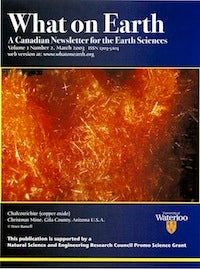GEOSCIED IV - Western Canadian Geology exposed to the international geoscience community
By: Alan V. Morgan
If you are a person interested in geoscience education, August 2003 was the month to be in Calgary. The meeting was hosted by the Canadian Geoscience Education Network a standing committee of the Canadian Geoscience Council, but run by a small group of local volunteers over four days of meetings preceded and followed by some fantastic fieldtrips.

